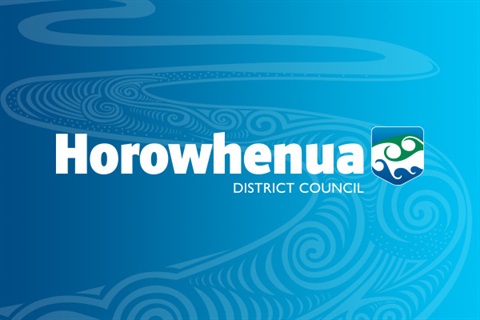Annual Report shows preparations for growth forging ahead
Published on December 17, 2020

Horowhenua is forging ahead with projects set to transform the district as it prepares for its population to almost double in the next 20 years, according to Horowhenua District Council’s Annual Report.
Council adopted the Annual Report at an extraordinary meeting on 17 December. While legislation normally requires territorial authorities to adopt their annual reports by the end of October, an extension until 31 December was granted this year due to COVID-19.
Mayor of Horowhenua Bernie Wanden said he was proud of the dedication, selflessness and community spirit shown across the district as Council and community strove to navigate the challenges of the COVID-19 pandemic.
“A highlight of the year for Council must be the commitment of staff to keep essential services, such as water, wastewater, rubbish collection and civil defence running throughout lockdown, as well as the outstanding efforts of staff who couldn’t perform their roles in the usual way to keep supporting the community. One example is our librarians, who made over 2,000 phone calls to check in with vulnerable members of our community while our physical libraries were closed,” he said.
“We’ve also done what we can to provide economic relief for those affected financially by the pandemic. We’ve delivered a 1.83% decrease in our rates revenue for 2020/2021, developed a policy to allow people to postpone rates payments in extraordinary and emergency circumstances, and committed not to increase fees and charges for Council services until at least July 2021.”
Council’s Chief Executive David Clapperton says the Annual Report 2019-2020 shows Council is “assiduously pursuing Government investment to stimulate our economy and support the new infrastructure our district needs to develop for the future”.
“During the 2019-2020 financial year we secured Provincial Growth Fund (PGF) investment for two road safety projects to upgrade Queen Street and stimulate new jobs; as well as for investment in a digital hub for small businesses to support our economy. We’ve acted quickly, and both those projects are already delivering benefits for our community,” he said.
“We also presented a project to rejuvenate the Manawatū River Loop and provide local jobs for PGF investment. That proposal has since been successful in securing $3.86 million of Government funding, and work on Stage 1 of project has been underway since August 2020.”
Mr Clapperton said master planning to guide residential growth was a focus for Council throughout the 2019-2020 year.
“Despite the challenge of COVID-19, Horowhenua continues to grow strongly, and we expect our district’s population to reach over 62,000 by 2041. That means we’ll need an extra 500 homes per year, and Council has been busy this year moving forward with master plans that ensure new residential areas are well-planned and properly integrated with existing settlements,” he said.
Master plans are in place for Tara-Ika, a proposed development in south-east Levin that will provide 2,500 new homes; a proposed community of 600 new homes in Foxton Beach; and 600 proposed new homes in Waitārere Beach.
“We submitted a proposal for Crown Infrastructure Partners to invest in Tara-Ika, which was successful, with up to $25 million of funding to fast-track the development announced in August 2020. Work is already underway to construct the infrastructure Tara-Ika will need,” Mr Clapperton said.
Other highlights of 2019/2020 include:
- A new roundabout at the intersection of Queen Street and Cambridge Street to improve safety for motorists, cyclists and pedestrians.
- Reduced speed limits were brought into effect, following engagement with the community, to more accurately reflect safety risks on rural and rural residential roads and make speed limits more consistent.
- A new kerbside recycling service was rolled out in response to engagement with the community on Council’s Waste Minimisation and Management Policy.
- A 25-year consent was granted for land-based discharge of treated wastewater The Pot, following two years of extensive investigations and engagement with Ngāti Raukawa, Muaūpoko, and landowners.
- Levin was selected as a resettlement destination for 90 former Colombian refugees.
- A network of electric vehicle charging stations across the district was completed.
- Refurbishment of Shannon Library kicked off, with new shelving, carpets, customer service desk, heating, and refreshed book stock.
Financially, Council showed an operating deficit of $5.3 million against a budgeted operating deficit of $2.5 million. The was mainly due to Levin Landfill after care provision of $1.6 million, which was the result of Treasury setting a lower discount rate to convert future costs into current value. An unbudgeted loss on interest rate swap contracts of $1.3 million was the result of lower global interest rates.
Overall, Council showed a surplus of $13.1 million against a budgeted surplus of $7.09 million. The main reason for the difference is that Council budgeted asset revaluations to be $9.58 million, however asset values increased by $18.4 million. This was due to higher land values.
Council met the prudential benchmark for debt control for the first time in three years, and the operations control benchmark for the first time in four years. Performance on the balanced budget benchmark improved from 91.14% last financial year to 92.24% this financial year, against a benchmark of 100%.